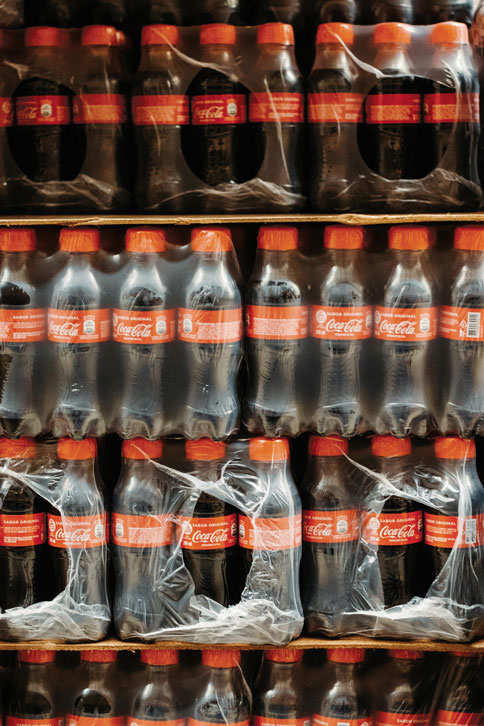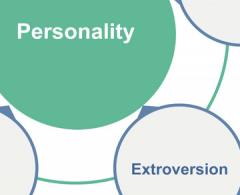
This Article From Issue
May-June 2025
Volume 113, Number 3
Page 184
SWEET AND DEADLY: How Coca-Cola Spreads Disinformation and Makes Us Sick. Murray Carpenter. 344 pp. The MIT Press, 2025. $29.95.
If the food industry established a Hall of Fame to honor companies that have compromised and co-opted both scientists and professional organizations, created pseudoscientific front groups, diverted attention from the harms of its products, distorted science, and undermined public health, Coca-Cola would surely be elected on the first ballot.
The company’s manipulation of science is laid bare in journalist Murray Carpenter’s new book Sweet and Deadly: How Coca-Cola Spreads Disinformation and Makes Us Sick. Carpenter explores how Coca-Cola has gotten away with these actions for so long and argues that not only does Coca-Cola significantly contribute to chronic disease, it has also actively and purposefully spread disinformation for decades to hide the health risks associated with its sugary beverages. These beverages are uniquely harmful, with “some scientists say[ing] they are the single item that most contributes to obesity and maladies such as type 2 diabetes and cardiovascular disease.” Carpenter even goes on to say that drinking Coca-Cola and other sugar-sweetened drinks is one of the biggest threats to public health in the United States.
Carpenter notes that when previous corporate misbehavior by cigarette, opioid, and other industries has eventually come to light, it was often followed by policies, litigation, and other actions to protect the public. Coca-Cola, Carpenter says, is different, in that it “has countered its critics better than any other major corporation. The brand seems ever enshrouded in an aura of goodness and happiness. Its public relations campaigns are so effective that many Americans still have not gotten the memo about the health risks posed by sodas.”
Drawing from court records, internal company documents, and investigative reporting, the book covers a range of related topics. Carpenter delves into the long-standing appeal of Coca-Cola products as well as their potentially addictive components; examines the disinformation campaigns intended to counter research linking sugared beverage consumption to diabetes, obesity, heart disease, and other ailments; and outlines Coca-Cola’s systematic effort to undermine attempts at regulation and legislation, particularly soda taxes. He also illustrates the outsized effect of sugared beverages on communities of color, and how public exposure of Coca-Cola’s disinformation campaigns has seemingly had no impact on its overall success.
Coca-Cola’s disinformation efforts can be traced as far back as the 1940s, when alarms began sounding about sugar consumption and health. In the decades that followed, the science on sugared beverages expanded greatly and was joined by evidence on the addictive properties of certain foods, research on marketing (particularly to children), and concerns that pairing caffeine with sugar keeps people wanting more.

Eduardo Soares/pexels.com
Carpenter describes Coca-Cola’s highly sophisticated, well-funded, decades-long effort to convince the public, elected leaders, and bodies like the World Health Organization that its products do not cause harm and are actually good for people (hydration!). These efforts have included encouraging a focus on physical inactivity, rather than diet, to address obesity and diabetes.
In 2009, Coca-Cola partnered with two of the largest physical fitness organizations—the American College of Sports Medicine and the National Strength and Conditioning Association—to create a health program called Exercise is Medicine that emphasized exercise over diet. The beverage company was also the first corporate partner of the American Academy of Family Physicians (AAFP), which triggered the public resignation of more than a dozen doctors from the organization. Coca-Cola also went on to donate millions of dollars to the AAFP and the Academy of Nutrition and Dietetics (AND), formerly the American Dietetic Association. What did the donations buy? Silence for the most part, but also prominent speaking roles at national meetings, panels populated by industry-funded scientists, and in the case of AND, position statements on the benefits of sugared beverages (underwritten by Coca-Cola). The goal, of course, was to give credibility to the beverage company by masking the harmful effects of its products.
Carpenter exposes the Global Energy Balance Network (GEBN), which was created by two prominent researchers. GEBN was portrayed as a worldwide network of scientists doing credible work and became highly visible in the media. The organization issued reports, videos, and press statements that cast doubt on health research about diet, and the scientists involved spoke repeatedly to the press and were keynote speakers at major scientific meetings.
Yolanda Hancock, a pediatrician who studies obesity, states that Americans of color disproportionately consume Coca-Cola, and that this is not an accident. The soda industry targets people of color, she says, explaining that “on BET and these other ‘Black channels’ you’re going to have the industry buying more ad time.” Black children see twice as many soda ads as white children.
By 2020, soda consumption among Americans was decreasing, with soda taxes playing a major role in the decline. However, although soda consumption may be declining, the sales of other sugar-sweetened drinks made by Coca-Cola and other companies are increasing. These include juice drinks and energy drinks.
Had Coca-Cola and other companies not acted this way for decades, the public would have known much sooner of the dangers of these products. Sugared beverage taxes might exist in many more jurisdictions. There would likely be much stronger labeling and warning requirements, along with strict boundaries on what can be marketed to children and pushed in schools. Companies might have been required to gradually reduce the sugar in their products. Would any of these changes have made a difference? What might the benefits have been on death and disability rates worldwide? If these potential benefits could be calculated, then the appalling impact of corporate influence on worldwide public health might finally become clear.

American Scientist Comments and Discussion
To discuss our articles or comment on them, please share them and tag American Scientist on social media platforms. Here are links to our profiles on Twitter, Facebook, and LinkedIn.
If we re-share your post, we will moderate comments/discussion following our comments policy.